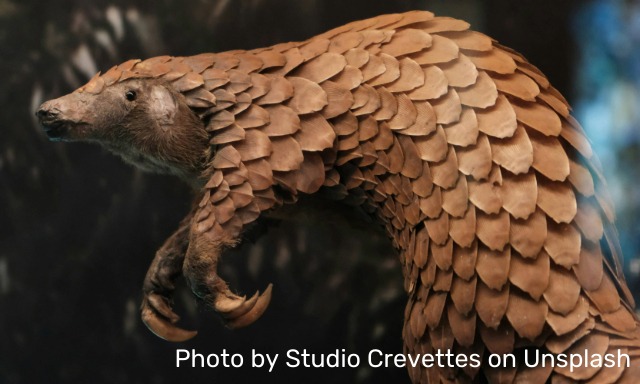I was introduced to the Common Earth curriculum by someone I met on the Substack platform where I explore my new hobby of writing. My inspiration had attended Module 1 and was soon to begin Module 2. It sounded so interesting so I inquired. Eventually, I had an interview with Sarah Patterson and was hooked. I have since completed both Modules. Now it is time to figure out how I might apply what I have learned and figure out where I fit. Some of the topics in the curriculum were not new to me but the presentation wowed me and left me thinking differently. While I don’t know exactly how the Common Earth experience will affect me, it has certainly changed how and what I write about in my Newsletter. A while back, I wrote an essay about Biomimicry. What it became was a mixture of what I knew before and what the Common Earth experience added for me. I have adapted it here.
My Substack Newsletter is titled “Why Living Today Rocks”. We have created a wonderful, albeit unsustainable world. We have, within our power (starting with our minds) to change and all of our advances to date provide the tools by which we can change. What follows here is my adapted post about biomimicry. What I think about it now was greatly affected by the Common Earth coursework with a mixture of my own opinion. I hope you enjoy it. My original post on Substack was a bit different but is here if you are interested.

This post started with this photograph of someone holding a pangolin. One of my attentive readers noted the scales of pangolins are made from largely the same materials as our fingernails. Our wonderful world has many examples of keratins and our fingernails and pangolin scales are just a couple of examples. This made me think about biomimicry.
In a recently completed Common Earth class, we explored all sorts of concepts. Most of them are guides to how life on Earth will change in the coming decades. We are finally smart enough and capable enough to carefully study how life works on the planet and marvel at the amazing capacity of nature to do things better than we might ever imagine! Nature operates with efficiencies that are inconceivable when compared to any modern endeavor. It is finally time for us to focus on mimicking nature rather than subverting it.
Polymers
In the movie “The Graduate”, Dustin Hoffman is taken aside and told the future is plastics. We’ve been at it for about 75 years and have focused on making all sorts of plastics the largest extent from oil. While we might put some of them in the blue receptacle, very few get recycled and typically are used once. It is time to compare ourselves to nature and perhaps learn a lesson or two. Nature has been making polymers for about 500M years. Nature in all its wonders focuses on a couple of remarkably versatile substances. Humans, by contrast, ingest a credit card’s worth of plastic per week (about 5 grams). Something needs to change!
Meet the Keratins
Keratin is everywhere! All sorts of animals use it in different ways. Among mammals, the hair (including wool), horns, nails, claws, and hooves, are made primarily of α-keratins. Among reptiles, scales, claws, and, in the chelonians, such as tortoises, turtles, and terrapin, the shells, which are made primarily of β-keratins.
We all instinctively know how durable these keratins are. Only “Florida Man” is asinine enough to wrestle an alligator encased in keratin armor. Asians attribute aphrodisiac qualities to the rhinoceros horn. Nature has figured out (and shared the plans with us) how to do this. Burning a barrel of crude oil is not required to make some fingernails or beaks. What does nature know that we don’t?
Nature’s Rules & Principes
The study of nature with a focus on emulating and learning a better way to manage processes is recent. Practitioners established the guiding principles. If you want to learn more about biomimicry I recommend Janine Benyus’s book Biomimicry: Innovation Inspired by Nature (1997)
The original 9 Biomimicry Life’s Principles were
- Nature runs on sunlight
- Nature uses only the energy it needs
- Nature fits form to function
- Nature recycles everything
- Nature rewards cooperation
- Nature banks on diversity
- Nature demands local expertise
- Nature curbs excesses from within
- Nature taps the power of limits
I decided to only focus on items 1, 2 & 4. Evaluating biomimicry more comprehensively leaves me breathless with the opportunities that lie under our noses (a mustache is made of keratin). When pressed, humanity has applied the principles. When it has, it has led to towering achievements.
1. Nature runs on sunlight
When photosynthesis emerged on this rock of ours the world’s greatest parlor trick which turns CO2 into O2 (oxygen) kicked life into high gear. The C6H12O6 is just a chemical name for the bane of many dieters. It’s a carbohydrate and is a handy way to make some sugar which we all like anyhow. Those carbohydrates fueled plant growth. Nature has this cool virtuous cycle. The ONLY fuel to make this reaction go is sunlight.

Once the plants started converting CO2 to O2 animal life was just over the horizon. The O2 didn’t magically form an atmosphere. Most got dissolved in the ocean and then grabbed by all the free iron near the bottom. We needed almost 1B years of photosynthesis before the iron was done sucking up oxygen. Finally, some free oxygen started accumulating in the atmosphere!
Every living thing manages to get along with just sunlight as a source of energy. Nature found no benefit to localized sources of energy. EVERYTHING we need just shines down free of charge.
If we had only ended up with some amoebas and an occasional ant, maybe nature wouldn’t be so worthwhile to mimic. What we have with 9M+ species is simple proof you might just be able to manage the whole show with some sunlight and the approach is worth mimicking.
2. Nature uses only the energy it needs
Wasting energy meant risking your life. So wasting energy, regardless of what the economic system has warped its cost to be is dumb. How do we warp the cost? Pretty simple. We charge only for the extraction, conversion, and transportation cost plus some profit. We do not charge the FULLY LOADED cost of hardly anything. This is the simple distortion we pretend does not matter. This is how excessive use allows the profit extraction to escape responsibility for the downstream cost of their products. This is WHY we end up with so much waste.
Only when the costs are EXTREME do we intervene in “the perfection of markets”. We pretend otherwise to keep our market definitions simple. We ignore externalities like pollution and degradation. These simplified definitions always result in the same thing. We privatize the gain and socialize the loss. Removal of lead from paint and gasoline are those VERY RARE interventions and only when we realized it was a neurotoxin for our brains. Nature doesn’t do any of this of course. Nature doesn’t use Bitcoins or currency nor does it flourish when one tree suctions all of the nutrients in the soil and sacrifices all surrounding life. There was never a FOREST magazine article listing the ten most prolific trees in the world and pointing out those ten trees are now larger than all the other trees on the planet combined. A Musk or Bezos tree has not evolved in the last 3.8B years for a reason. Such a tree would be a threat to life on the planet and nature would squash it.
The evolution of minimized energy use has led to the diversity of the planet. This is why the experiment of the last 175 years is dangerous despite the short-term comforts it has brought — at least in the first world.
4. Nature recycles everything
Where do all the hair, shells, claws, beaks, horns, and hooves go? With oil, we make hundreds if not thousands of different plastics. Nature largely makes two with only subtle differences in the proteins. All of the keratin break down into its component amino acids. It is always 100% recycling. For those that have been on this ride with me for a long time, I think Nature’s Cookbook is one of my very best posts ever. It is the story of how everything that matters is made (until we came along).
I’m Not Anti-Progress
There is nothing wrong with progress. The lesson of biomimicry in nature is if you make it, you return it to its constituents. If such a SIMPLE PRINCIPLE were applied to the making of everything, the true and fully loaded cost of everything would be arrived at. We’ve made amazing advancements and many were inspired. What would be so wrong to apply THE SAME PRINCIPLE to everything? My sense is we would arrive at the valid cost of progress and our world could be on a path to sustainability.
I am not sure we would make any less. What I know is what we make would be markedly different. It would be better for the world and better for the future. It doesn’t seem that radical to me.
Where Does It All Go?
There are no vast landfills full of pangolin scales or robin beaks or pre-male-pattern baldness hair. All of these things are just keratins. Keratins are just a string of amino acids. There are perhaps 500 different amino acids on the WHOLE PLANET. Every living thing and all of its parts are made from the same stuff. Lastly, it is all water-based chemistry. No oil-based stain is required! We are all based on water and it is the only medium needed.
This Is Better In EVERY Way
There are vast challenges ahead as we re-examine how we coexist on this planet. Nature has left us some wonderful clues. When I examine the principles of biomimicry, we get a secret decoder ring on how to live on this planet in a more sustainable way. It is time we heed the hints.
Mark Dolan joined Pod 22 of the Common Earth Insight course. He was born and raised in Western New York and a happy Minnesota transplant who considers it well named as the Star of the North (L’Etoile du Nord). He plans to write a book in retirement and his Substack Newsletter – Why Living Today Rocks is the first step in getting there.


